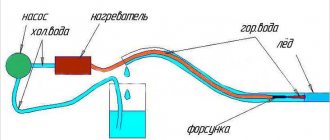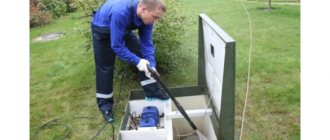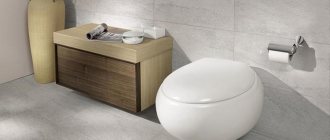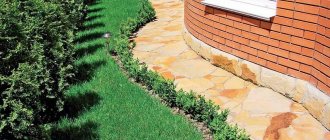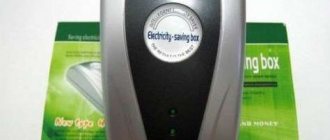During the design of sewerage systems, various factors are taken into account and the most optimal option is selected. Naturally, each of them has its own advantages and disadvantages.
Sewerage is a drainage system for domestic, rain and industrial wastewater for purification of contaminants and further use or discharge into a reservoir.
The most popular methods of drainage are combined and separate sewerage.
In general, the sewer system is divided into 5 types:
- alloy;
- separate;
- semi-separate;
- incomplete separate;
- combined.
purpose of the sewerage system
A sewer network designed to receive and discharge atmospheric water is called a rainwater (storm) or drainage system. If practically pure, unpolluted industrial wastewater is discharged into a rain sewer, it is called industrial rainwater.
A network designed to receive and discharge domestic water is called a domestic network.
The industrial sewer network is the sewer network of an industrial enterprise, designed to receive and discharge only contaminated industrial wastewater (with separate disposal); industrial and household - a network designed for the reception and disposal of joint industrial and domestic wastewater. Joint disposal of household and industrial wastewater is allowed only in cases where this does not disrupt the operation of the network and treatment facilities of the domestic sewerage system.
Separate city sewer system
Scheme of a separate sewerage system: 1 – household network collector; 2 – main collector; 3 – rain network collector; 4 – release.
A separate sewerage system does not have the indicated disadvantages of a common sewage system. Its advantage is the uniform operation of pumping stations, main collectors, pressure pipelines and treatment facilities, which are designed only for the flow of domestic and industrial wastewater. The disadvantages include the following: construction of two separate networks (rainwater and industrial and household); discharging irrigation water when cleaning streets and rainwater without treatment directly into a reservoir. According to the experiments conducted, wastewater and the first portions of atmospheric water (especially during rare precipitation) have an accumulation of contaminants close to domestic wastewater.
In terms of sanitary and hygienic indicators, the all-alloy and complete separate sewerage systems are considered equivalent. In both cases, according to sanitary standards, the permissible amount of pollution flows into the reservoir during precipitation.
COMPLETE AND PART-TIME SEWERAGE SYSTEMS
A separate sewer system may be complete or incomplete.
A complete separate system is called a system that includes two or more completely independent sewer networks, a network through which only rainwater or storm water and conditionally industrial water are discharged; a network for the drainage of domestic and part of contaminated industrial waters that are allowed to be discharged into the domestic sewer system, a network through which contaminated industrial waters that are not allowed to be discharged together with household water are drained.
First of all, an incomplete separate sewer system is a sewer system designed to drain only the most contaminated industrial and domestic wastewater; With this system, atmospheric waters flow into water channels through driveway ditches, open chutes, ditches and thalwegs.
What it is
A common sewer system is a system through which domestic, industrial and storm drains are transported together. This includes drainage flows collected from the surface into storm wells and runoff from car washes. The exact definition of complexes of this type is given in the Decree of the Government of the Russian Federation dated February 12, 1999. The document defines sewerage systems and schemes:
- separate. A network of pipelines, each of which transports only a specific type of wastewater - domestic, industrial or storm water. This is the most complex and expensive design option. It is used in large industrial centers that use a lot of harmful elements in technology. Combined treatment and treatment of wastewater is very difficult, so it is easier to treat them separately. A separate sewer system allows you to reduce the size of pipelines and simplify wastewater treatment. However, maintenance or repair of such complexes is complex and requires high costs;
- semi-separate sewer system. Its peculiarity lies in the variable nature of storm areas. In normal operating mode, there are two collectors - domestic and storm. With a relatively small supply of water, all wastewater moves through its own networks to treatment plants. If there is an excess supply of rainwater (heavy, prolonged rainfall), the excess is discharged into the reservoir without treatment. They are considered conditionally pure. Moreover, such situations do not arise often. A semi-separate sewerage system is a compromise option between separate and combined complexes. Rainwater washes away a lot of harmful components from the surface. The most polluted are the first storm drains that go to treatment plants. Subsequent portions of wastewater are relatively clean, and their quantity is too large. Therefore, they are simply dumped into a reservoir, for which there are special chambers in the area where the storm and domestic sewers connect. Semi-separate networks have a number of disadvantages and are therefore rarely used.
combined sewerage systems
Combined sewerage systems appeared as a result of the expansion of cities with a combined sewerage system. Due to the fact that in dry weather common alloy collectors are not fully loaded, domestic and industrial sewer networks from new development areas were connected to them, and for atmospheric waters that could no longer be accepted into the existing common alloy collectors, independent rain sewers were laid with the release of atmospheric waters into nearby bodies of water without treatment. Thus, a combined sewerage system appeared, in which in some areas of the city a common alloy system was preserved, in others a complete separate system, and in others an incomplete separate system.
General alloy city sewerage system
This method of drainage has found application in the construction of multi-apartment high-rise buildings, since the length of its street and intra-block networks is 30-40% less, and the cost of use is 15-25% less (compared to two independent networks of a complete separate sewer system).
The disadvantage of a common sewage system in sanitary terms is the discharge of rain and polluted water into local reservoirs on the main and outlet collectors.
Scheme of a common sewage system: 1- drainage basin collector; 2 – main collector; 3 – storm drain; 4- ejection.
This is explained by the need to reduce the power of treatment and pumping stations, to reduce initial construction costs for reasons such that during periods of heavy rain the amount of precipitation is several times greater than industrial and domestic wastewater.
There is a theory that the mixture of rain and wastewater in this case does not pollute the reservoir much, since such discharge usually occurs during heavy rainfalls for a short period of time (about 100 hours/year).
All-alloy sewers also have several technical disadvantages in dispersed and low-rise buildings. In dry weather, when only domestic water is available in the network, severe sedimentation and decay occur. During periods of heavy rainfall, on the contrary, the network may be overcrowded and basements (especially in areas of the lower part of the city) may be flooded.
Semi-separate city sewer system
Scheme of a semi-separate sewerage system: 1 – household network collector; 2 – separation chamber; 3 – rain network collector; 4 – release.
According to sanitary standards, it is the best option in comparison with all-alloy and separate. In this case, a minimum of pollution enters the reservoir during rain. The volume of flowing untreated rainwater is in the range of 3.4-23.4% and contains from 3.7 to 11.5% of suspended particles with biochemical oxygen demand (BOD5) from 5.8 to 16.5% of total pollutants storm runoff from the location of the facility. Despite the superiority of the semi-separate sewer system, it was not used due to the significant initial monetary investment required to construct two networks simultaneously with an interceptor sewer. Due to the increased requirements for the protection of reservoirs and the need to purify surface runoff from the territory of densely populated cities located on low-power reservoirs, this method of drainage has been used in the reconstruction of existing sewer systems with the installation of deep collectors.
According to technical, economic and sanitary criteria, the combined sewer system is between the combined and separate ones.
contents .. 1 2 3 ..1.2.
Drainage systems for cities and industrial enterprises
Drainage system
The city consists of the following main
elements
(Fig. 1.1):
— internal drainage systems in buildings; intra-block drainage networks;
— external (external) drainage network;
— regulating tanks;
— pumping stations and pressure pipelines;
— treatment facilities;
— releases of treated wastewater into a reservoir and emergency releases.
External ( external
) drainage network, sometimes called street, is a system of underground
pipelines
laid with
a slope
in the direction of water movement.
In order to reduce burial, pipelines should be routed
in a direction coinciding with the slope of the earth's surface.
When drawing up a drainage network diagram, the serviced facility is divided into
drainage
basins . This is part of the territory of the serviced facility, limited by watershed lines and the boundaries of the facility.
Rice. 1.1 – General scheme of city drainage:
RNS – district pumping station; GNS – main pumping station;
OS – treatment facilities; PP – industrial enterprise;
1 – city border; 2 – external (external) drainage pipeline network;
3 – storm drains; 4 – siphon; 5 pressure pipelines;
6 – release of treated wastewater; 7 – watershed lines
External
The drainage
network
is divided into the street network, drainage basin collectors and main collectors.
The street network
is pipelines laid along part of the perimeter of the block (from the lower side along the relief) or along its entire perimeter.
It is joined by intra-block
networks.
Wastewater basin collectors
– pipelines designed to receive and drain water from part or the entire drainage basin.
Main collectors are pipelines designed to receive and drain water from part or all of the serviced facility. The main collector transports
to a pumping station or treatment plant.
Regulating tanks
They are artificial or equipped natural containers that ensure
the accumulation
of wastewater during the period of maximum influx.
Discharge
or pumping of water from reservoirs is carried out during periods of reduced wastewater inflow.
They are usually combined with receiving
tanks of pumping stations.
Gravity
Drainage of water to treatment facilities is possible only with highly pronounced
terrain
and relatively large
slopes
of the earth's surface.
When a depth of
6–8 m, construction work using the open method (with the development of trenches) becomes very
difficult
.
Therefore, it is necessary to pump
wastewater.
Sewage pumping stations being built for this purpose ( SPS
)
are divided
into local, regional and main.
Local
stations are used for lifting and pumping wastewater from one building or a group of them,
regional stations
are for lifting and pumping wastewater from part or the entire drainage basin,
main stations
are for lifting and pumping wastewater to treatment facilities from part or the entire serviced facility.
Pumping stations are characterized by a large depth
and a round shape (since the lowering method of work is used).
Pressure pipelines
are made in two threads in order to increase the reliability of the drainage system.
Treatment plants
are a complex of structures in which wastewater is gradually
purified
from dissolved and undissolved contaminants.
Treatment facilities are located downstream
of the river relative to the facility being served, at some distance from the development area.
Thus, treated wastewater is discharged
into a reservoir
outside the city
or industrial enterprise, and river water does not become polluted within the city.
Issues
wastewater into a reservoir are special structures, the design of which is determined by the requirement to ensure rapid and intensive
mixing
of wastewater with the water of the water body.
Emergency
outlets are located on the main sewers located along the river.
They are usually installed
in front of pumping stations.
Their arrangement is coordinated
with sanitary authorities and fisheries protection authorities.
Discharge of untreated wastewater into the river through emergency outlets is allowed
only in emergency cases - accidents at collectors or pumping stations.
Drainage system
and, accordingly, the design of the drainage network is selected
depending
on the hydrogeological, topographic conditions of the area, the nature of production processes in a given region, and water consumption for domestic and industrial purposes.
Depending on how
individual types of wastewater
are disposed of are divided
into several types: combined, separate (complete or incomplete) and semi-separate.
1) With all-alloy
in the drainage system, all types of wastewater are discharged
through a single
drainage
network
(Fig. 1.2).
During periods of heavy rainfall
, due to the insignificant concentration of pollutants, it is planned
to discharge
part of the wastewater mixture into a water body without treatment through special devices -
storm drains
, usually located on the main collector near the reservoir.
Rice. 1.2 – Scheme of a common alloy drainage system
1 – drainage basin collector; 2 – main collector;
3 – storm drain; 4 – issue
Application
All-alloy drainage systems
are advisable
if there is a powerful reservoir near the serviced facility into which significant volumes of untreated wastewater can be discharged.
Currently, general alloy systems are not designed
, because
they do not comply with modern rules for the protection of surface waters, or they install common systems without storm drains
, that is, all types of wastewater are discharged for treatment.
The disadvantage
of such systems is that in dry weather the hydraulic operating conditions of the collectors are worse due to their low filling.
2) With separate
system, certain types of wastewater are discharged through
independent
networks.
Full
a separate system (Fig. 1.3) has at least
two networks
(usually domestic and rainwater), and industrial wastewater is treated together with domestic wastewater.
Incomplete
a separate system has only
one
drainage
network
for the removal of domestic and industrial wastewater.
Rainwater is drained into the reservoir through open trays, ditches and ditches. The construction of an incomplete separate system is possible only for small
objects
.
Typically this system is
an intermediate
step in the construction of a complete split system.
Rice. 1.3. – Scheme of a complete separate drainage system
K1 – production and household network; K2 – rain network
3) Semi-separate
the system (Fig. 1.4) has
two
drainage
networks
- industrial and domestic and rainwater.
At the intersections
of these networks,
separation
chambers are installed.
principle
of the separation chamber is based on taking into account the varying degrees of water jet departure from the ledge at different speeds of water movement in the collector with small and large fillings.
At relatively low
water flow rates in the rainwater network, the chambers transfer the entire flow of rainwater into the main collector; at
high flow rates
they transfer only part of the water flowing through the pipes in the bottom part into it.
Thus, the most contaminated
rainwater flowing down during the initial period of rain, when the bulk of the pollution is washed off from the surface of the drainage basin, and
bottom
water flows that are most saturated with pollution are diverted for treatment.
When are high
(during heavy rainfall), less polluted rainwater is discharged into the reservoir without treatment.
Rice. 1.4 – Scheme of a semi-separate drainage system
1 – household network collector; 2 – separation chamber;
3 – rain network collector; 4 – issue
With sanitary
From a point of view, this system is the most
progressive
, however, due to the high construction and operating costs, it has not become widespread.
“urban” often appears in the specialized literature.
wastewater".
Urban wastewater is understood as a mixture
of all three types of water in a common drainage system or domestic and industrial in a separate system.
In the country as a whole, of the total volume of water disposal in urban sewerage systems, industrial
wastewater accounts for
40%
.
According to the chemical
nature, urban wastewater pollution is divided into
mineral
(sand, clay, dissolved mineral salts, acids and alkalis) and
organic
, which in turn can be of plant and animal origin.
Municipal wastewater has extremely high microbial
contamination.
To resolve the issue of discharging
urban wastewater into a water body, there is no need to study its
composition
, since it is quite
constant
, and differences can only be in
concentration
, which depends on the rate of water disposal.
Industrial
wastewater is accepted into the city sewerage system
with restrictions
. Nevertheless, the presence of industrial wastewater in urban runoff gives it a variety of composition, uneven volume and concentration.
At city wastewater treatment plants
At stations, water sequentially passes through
facilities
and
is disinfected
.
requirements
are imposed on municipal wastewater , the fulfillment of which is ensured by constant
monitoring
of the quality of wastewater from industrial enterprises connected to the city’s drainage network.
Formation conditions
wastewater from different plants can vary greatly.
Sewage of industrial enterprises
, as a rule, is carried out
using a complete separate
system.
Production
wastewater, depending on the type of pollutants and their concentrations, as well as the amount of wastewater and the places of its formation, is discharged in several independent streams.
For better local
several industrial sewerage networks
are organized , for example, for highly mineralized waters that do not contain highly toxic substances, acidic and alkaline wastewater, highly toxic wastewater, wastewater from cooling units, which usually do not carry pollution.
Separation
industrial wastewater may be
dictated
by sanitary reasons, fire and explosion hazards, the possibility of overgrowth and destruction of sewer pipelines, etc.
For preliminary wastewater treatment, the sewerage system of industrial enterprises includes local
treatment facilities, which are usually located on the territories of sewerage enterprises.
Uncontaminated
wastewater is usually combined into a separate stream.
Household
wastewater generated at an industrial enterprise is discharged and treated
separately
, if the composition of industrial wastewater does not require biological treatment.
It is also possible simultaneously
dispose of domestic and industrial wastewater if the latter are contaminated with organic substances, the destruction of which is possible biologically, while the concentrations of toxic impurities should not exceed the maximum permissible.
Rain
water flowing from
uncontaminated
areas of enterprises is discharged
by a separate
sewerage system or combined with uncontaminated industrial wastewater and discharged into the reservoir without treatment.
Contaminated
rainwater is discharged together with contaminated industrial wastewater and is subject to joint treatment before being released into the reservoir.
For some enterprises, during a feasibility study, an all-alloy structure
sewerage system
that
collects domestic, fecal and industrial waters (for example, when an enterprise is located in a city and there is a city general sewage system).
At enterprises where industrial wastewater is similar in composition to domestic wastewater
, wastewater can be discharged
through two
networks: industrial and domestic and rainwater.
contents .. 1 2 3 ..

